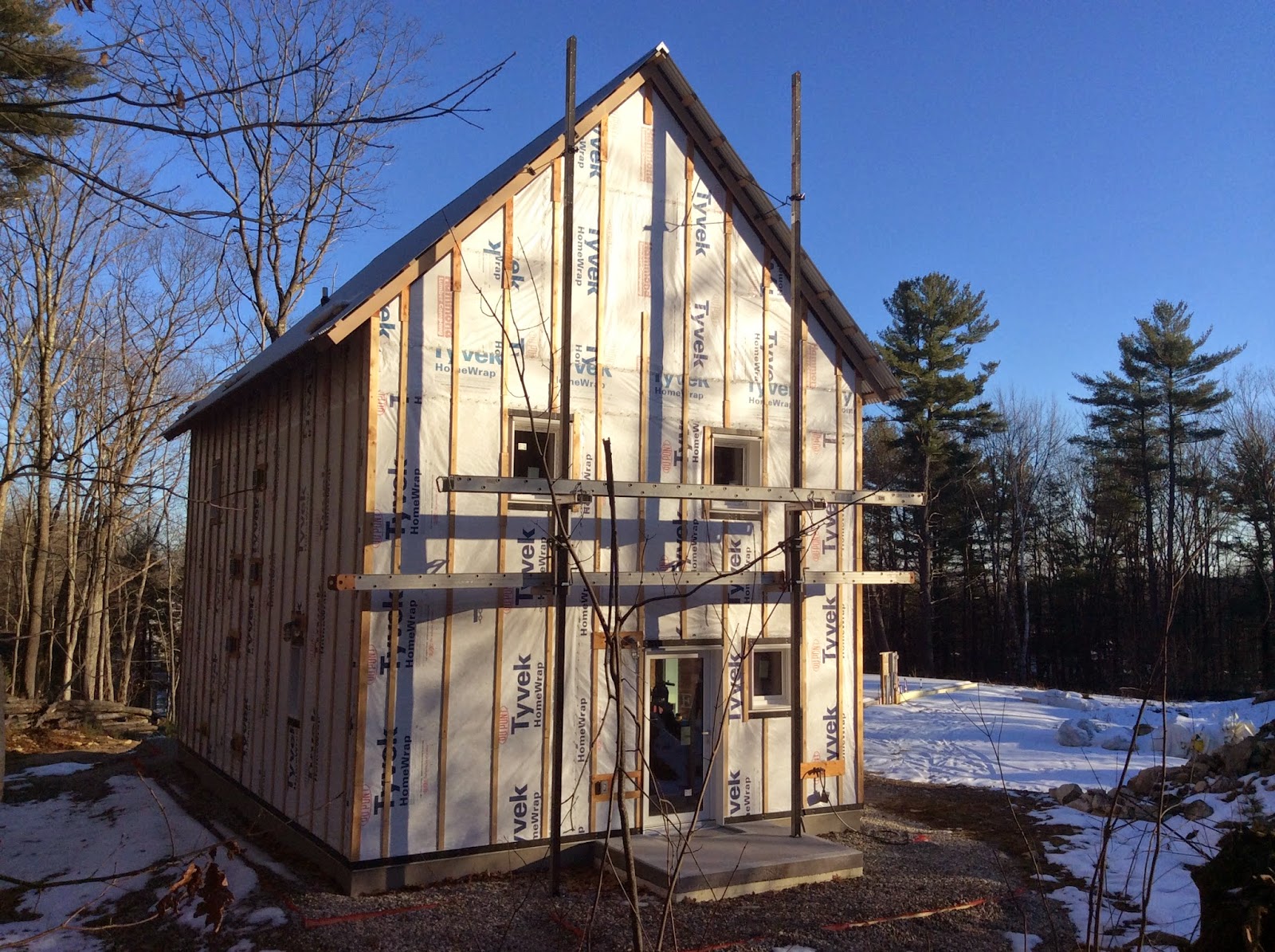Since the last post in October Jake has done a lot of work. The roof is finished and is successfully keeping the rain and snow out of and off of the house. Jake replaced the three bedroom windows that were a couple inches too small for secondary egress, and has fully insulated, wrapped, and furred the house - finishing just hours before the Thanksgiving snow storm. He has flashed and trimmed all the windows and doors, installed exterior electrical outlets and the doorbell, and brought power to the breaker box. Jake has ordered the fiber-cement siding, which should be delivered any day now. My Dad is hitting the gym to be able to assist (ladies take notice!).
Although we haven't turned on the power inside, with three straight days of sun, I swear it was more comfortable in our half-finished house (still only have 6 inches of insulation in the attic - it will eventually be 30 inches) than in our garage apartment today!
Although we haven't turned on the power inside, with three straight days of sun, I swear it was more comfortable in our half-finished house (still only have 6 inches of insulation in the attic - it will eventually be 30 inches) than in our garage apartment today!
 |
| The insulation going in. Jake used offset 6-inch layers of mineral wool (spun rock). |
 |
| The front door. To the left, from top to bottom, exterior cage light, doorbell, electrical outlet. |
 |
| The insulating, house wrap, and furring strips done. |
 |
| The window trim viewed from the outside. Jake has used foam insulation around the edges to decrease the heat losses where the window frame meets the rough opening (a classic location for heat loss). |



